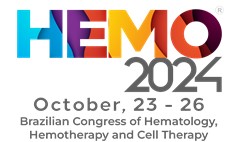
This study aimed to assess the impact of lenalidomide maintenance dosing on clinical outcomes and the development of lenalidomide refractoriness in Multiple Myeloma (MM) patients who received maintenance therapy following Autologous Stem Cell Transplantation (ASCT) at our institution.
MethodologyA retrospective analysis was conducted on 82 MM patients who underwent lenalidomide maintenance therapy on a 21/28-day cycle post-ASCT. Low-dose maintenance was defined as a dose below the maximum allowable level, determined by the patient’s Glomerular Filtration Rate (GFR) and hematologic parameters at initiation. The Maximum Tolerable Dose (MTD) was defined as the highest dose a patient could tolerate based on these criteria.
ResultsIn the overall cohort, median PFS was 56.0-months (95% CI: 40.15‒71.85) and median OS was not reached. However, 88.3% of patients were alive at 60-months and 68.2% at 120-months. A response of ≥ VGPR was observed in 91% of patients receiving low-dose maintenance therapy, compared to 73.3% in those receiving treatment at the maximum tolerated dose (p = 0.005). While the median PFS was 56.0-months (95% CI 47.06‒64.93) in those receiving low-dose maintenance; the median PFS was 33-months (95% CI 23.36‒42.63) in those receiving maintenance at the MTD (p = 0.166). Dose reductions during maintenance therapy due to adverse effects were reported in 17 patients (20.7%). Of these, 11 patients (16.9%) were initially on low-dose maintenance, while 6 patients (40%) were on the MTD (p = 0.42). The median duration of maintenance therapy was 21 months (6–34) for patients on low-dose maintenance and 11 months (4–24) for those on the MTD (p = 0.114). Second-line treatment was administered to 40 patients (48.7%) who experienced progression. The median PFS2 was 25.36-months (95% CI 9.24–41.48), and the median OS2 was 73.23-months (95% CI 42.50–103.95). Median PFS2 was 25.43-months (95% CI 0.20‒50.66) and the survival rate was 70% at 60-months in those receiving lenalidomide-based second line therapy, while median PFS2 was 25.36-months (95% CI 6.30‒44.42) and the survival rate was 53.8% at 60-months in those receiving lenalidomide free therapy (p = 0.978, p = 0.902 respectively). Following low-dose maintenance therapy, the median PFS2 was 26.167-months (95% CI 5.571–46.762) in the lenalidomide free therapy group and 25.433-months (95% CI 0.08–50.787) in the lenalidomide-based second line therapy group (p = 0.581). Although median OS2 could not be calculated, at 60-months, the survival rate was 74.5% in patients receiving lenalidomide-based treatment, while it was 62.3% in patients receiving treatment without lenalidomide (p = 0.637).
ConclusionThis study introduces the concept of low dose versus MTD lenalidomide maintenance. MTD does not confer a survival benefit and is associated with increased toxicity. Our findings support low-dose maintenance as a preferable approach, although lenalidomide refractoriness remains a concern.






